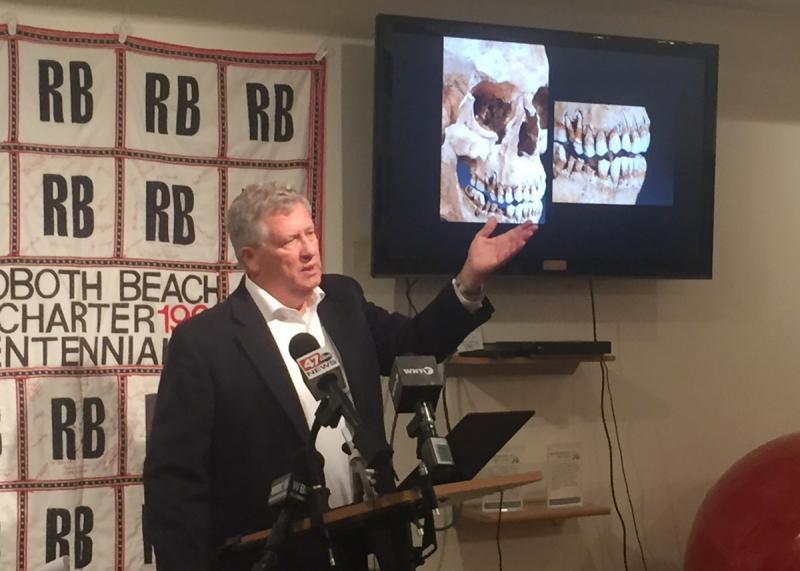Avery’s Rest burial sites offer window into 17th century living
Well-preserved burial sites of 11 early colonial Delawareans were discovered on land in West Rehoboth, and state officials say they could offer an unprecedented window into 17th century life in the Cape Region.
Secretary of State Jeff Bullock, Dr. Douglas Owsley of the Smithsonian Institute and members of the Delaware archaeological community revealed their findings at an event Dec. 6 at the Rehoboth Beach Museum.
Eight of the individuals found at the Avery’s Rest site are of European decent, while three others - including one child - were of African decent.
Owsley is almost certain John Avery and his wife Sarah, the landowners in the late 17th century, are among the remains discovered.
“Avery’s Rest provides a rare opportunity to learn about life in the 17th century, not only through the study of buried objects and structures, but also through analyses of well-preserved human skeletal remains,” said Dr. Owsley, who leads the Division of Physical Anthropology at the Smithsonian National Museum of Natural History. “The bone and burial evidence provides an intriguing, personal look into the life stories of men, women and children on the Delaware frontier, and adds to a growing body of biological data on the varied experiences of colonist and enslaved populations in the Chesapeake region.”
Avery’s Rest history
The site was discovered in 1976 and was later listed on the National Register of Historic Places in 1978.
The Delaware Division of Historical and Cultural Affairs raised concerns over proposed development in 2005, and a year later the state gained permission from the landowners to survey the site.
Surveys and excavations were carried out over the next several years before the first of the 11 burials was discovered in September 2012.
After obtaining consent from next-of-kin and landowners, the remains were removed and transferred to the Smithsonian for further analysis.
In March 2017, the Smithsonian confirms age, gender and ethnicity of the burials.
Read more in the Friday, Dec. 8 edition of the Cape Gazette
























































